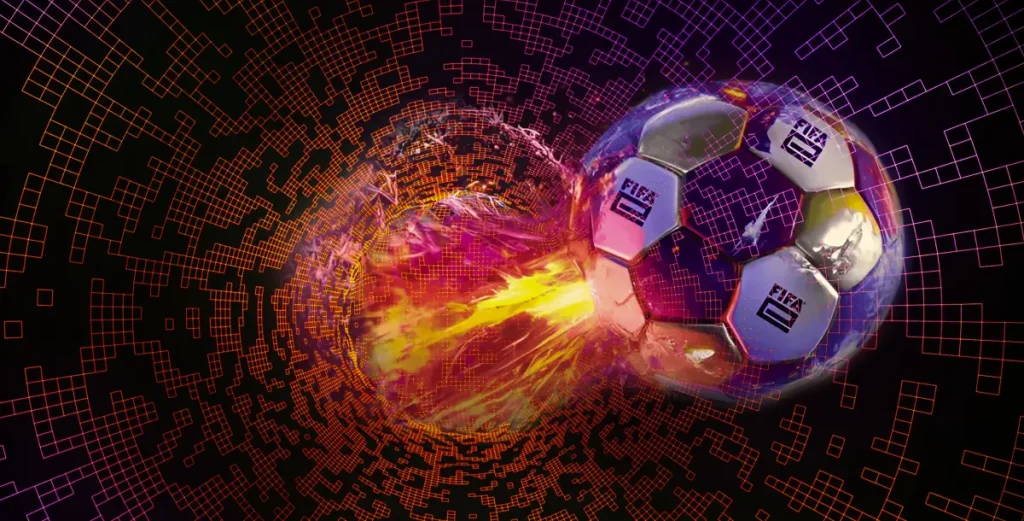Introduction: From Collectibles to Composability
When FIFA launched its first NFT collection in 2022, the effort was limited to static digital highlights with minor marketplace mechanics. It was a proof-of-concept—an early test of public appetite for digital sports memorabilia.
Fast forward to 2025, and the landscape has shifted dramatically. FIFA has re-entered Web3 with a much more sophisticated strategy: programmable NFTs tied to real-world match data, gamified ownership mechanics, and on-chain rewards systems that link fans, games, and decentralized apps into a new class of interactive experiences.
The rise of GameFi—where gaming meets decentralized finance—has proven that blockchain can do more than facilitate speculation; it can power self-sustaining digital economies with real engagement and revenue. But the lessons here aren’t just for gamers. Forward-thinking businesses can take cues from GameFi’s success, applying its core principles—tokenized incentives, smart contract automation, and verifiable digital ownership—to transform B2B applications. From loyalty programs that drive repeat engagement to enterprise marketplaces with seamless asset trading, blockchain’s infrastructure offers a blueprint for building more transparent, efficient, and profitable systems. The question isn’t whether blockchain has business value—it’s how companies can move beyond theory and deploy it at scale.
Why FIFA’s Move Matters to the Future of GameFi
1. Sports IP is the Trojan Horse for Mainstream Onboarding
FIFA, along with leagues like the NBA and UEFA, owns some of the most universally recognized content in the world. Where previous GameFi projects struggled to attract sustainable user bases, sports brands already have pre-established trust and distribution—fanbases that cross borders, cultures, and income tiers.
More importantly, these fans are not just spectators. They’re emotionally invested. They follow stats, trade collectibles, and build communities around their favorite clubs. That behavior is perfectly suited to digital asset ecosystems—NFTs, fantasy play, staking, and rewards loops—if the infrastructure can deliver at scale.
2. From JPEGs to Utility: The Shift to Smart NFTs
Early NFT deployments focused heavily on aesthetics or collectibility. But FIFA’s 2025 initiative pushes into a new category: utility NFTs—digital assets that evolve, unlock experiences, and integrate into gameplay or social mechanics.
Examples include:
- NFTs that track a player’s real-world performance and upgrade in rarity or rewards
- Match-based NFTs that grant access to fantasy tournaments or DAO-style voting for fan interactions
- On-chain loyalty tokens that tie into IRL ticketing, merch, or exclusive content drops
These next-generation NFT applications go far beyond simple collectibles—they require an interoperable framework where assets dynamically interact across platforms. This demands a robust technical foundation: programmable smart contracts for live updates, evolving metadata layers, adaptive trait systems, and secure cross-chain infrastructure—precisely the architecture FIFA is deploying to reinvent fan engagement.
FIFA’s NFT Strategy: Building a Next-Generation Fan Economy
FIFA’s latest Web3 push isn’t just about selling digital collectibles—it’s about creating an interactive ecosystem where NFTs evolve beyond static assets into dynamic, utility-driven fan experiences. Unlike its 2022 debut, FIFA’s 2025 strategy integrates real-world engagement, gamification, and cross-platform interoperability, setting a blueprint for how major sports IP can leverage blockchain at scale.
Key Pillars of FIFA’s NFT Playbook
Programmable, Dynamic NFTs
- Player performance NFTs that upgrade based on real-world match data (e.g., a Messi NFT gaining rarity after a hat-trick).
- Event-triggered traits (e.g., unlocking exclusive content after a World Cup goal).
Gamified Ownership & Rewards
- NFTs as access passes for fantasy leagues, prediction games, or DAO-style fan voting.
- Loyalty integrations with ticketing, merch drops, and VIP experiences.
Cross-Platform Utility
- Interoperable assets usable across FIFA-affiliated games, apps, and metaverse spaces.
- Bridging digital collectibles with real-world benefits (e.g., NFT holders getting stadium discounts).
Compliance & Global Scalability
- Region-aware distribution (complying with local regulations).
- KYC-gated experiences for age-restricted content or licensed markets.
Why This Model Works for Sports IP
FIFA’s approach taps into three unstoppable trends:
- Fan behavior: Sports audiences already collect, trade, and engage with stats—NFTs digitize these rituals.
- Infrastructure maturity: Smart contracts now support real-time metadata updates and cross-chain portability.
- Revenue diversification: Moves beyond one-time NFT sales to recurring engagement (subscriptions, royalties, secondary markets).
By anchoring NFTs in utility rather than speculation, FIFA is positioning itself at the forefront of the next era of fan engagement—one where digital assets are as integral to fandom as jerseys and match tickets.
Why Forward-Thinking Businesses Can’t Afford to Ignore GameFi’s Revenue Potential
For brands, media companies, and customer-focused enterprises, GameFi represents more than a blockchain experiment—it’s a transformative framework for monetizing engagement and building digital communities. The organizations that will lead in this space aren’t just those with strong brands, but those that can execute on three critical dimensions:
Monetizing Digital Engagement at Scale
- Convert passive customers into invested participants through tradable digital assets and interactive experiences
- Create recurring revenue streams via tokenized rewards, dynamic royalties, and interoperable digital products
Building Infrastructure for Next-Gen Loyalty
- Deploy compliant digital asset platforms with seamless KYC/AML integration
- Integrate blockchain-based incentives with existing CRM systems, e-commerce platforms, and membership programs
Future-Proofing Against Digital Disruption
- Own secondary markets for branded digital assets rather than relying on third-party platforms
- Implement enterprise-grade custody and analytics to manage digital inventory and customer insights
The blueprint is emerging: from Starbucks’ Odyssey loyalty program to Nike’s .Swoosh ecosystem, early adopters across industries are proving the model. The strategic question isn’t whether to incorporate GameFi principles—it’s how rapidly organizations can adapt them to their unique customer relationships and business models.
The Future of GameFi: Built on Enterprise-Grade Infrastructure
The next evolution of digital engagement requires far more than superficial NFT offerings—it demands industrial-grade infrastructure capable of powering sophisticated tokenization at scale for digital assets, rewards systems, and membership programs. Today’s market needs fully compliant NFT trading platforms with built-in KYB/KYC/AML verification, coupled with secure digital asset management through MPC wallet technology. Equally critical are programmable loyalty ecosystems supported by robust on-chain analytics, enabling businesses to transform passive engagement into dynamic, value-driven experiences. This infrastructure-first approach ensures not just innovation, but institutional-grade security, regulatory compliance, and sustainable scalability—the foundational requirements for any serious Web3 venture.
Enterprise-Ready Web3 Infrastructure Features:
- Regulatory-first architecture for global compliance
- Institutional MPC wallets with multi-sig controls
- Cross-chain interoperability for maximum liquidity
Power your digital transformation with ChainUp’s battle-tested institutional infrastructure solutions. Contact us today.




